Tag: training
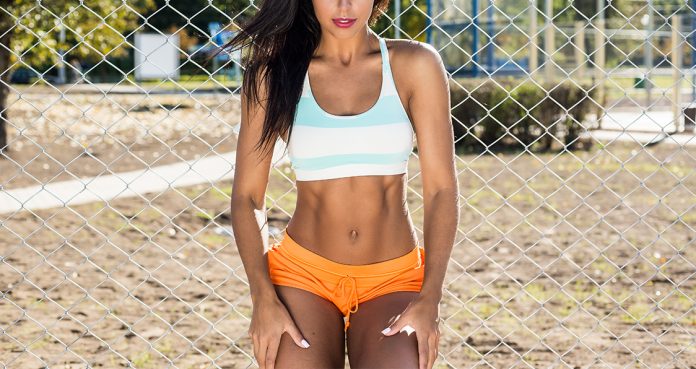
5 Big Rocks of A Fit Life
Foundation of A Fit Life
Most people never see results in the gym because they have been lied to, and they have been doing things incorrectly. Gym bros mislead unsuspecting people into following useless programs that get them nowhere.
If you can’t see any progress or have hit a plateau, this article is for you. We’ll be decoding five things you’ll need to get right if you want to see perpetual gains. Read the article carefully and assess which of the five areas you lack and need to improve in.
Training
Today, many people don’t see any results because they rely too much on their diet while undermining the importance of their training program. If your body gets used to your training routine, your progress will stall.
You need to be shocking your muscles in every workout. Using advanced training principles like supersets, drop sets, intraset stretching, BFR training are incredibly effective ways of taking your gains to the next level.
Nutrition
Even though people are better aware of the importance of the right diet, they make fatal mistakes while designing their nutrition program. People have been misled into believing that eating fats makes them fat, and consuming carbs won’t let them shed weight.
Consuming the macronutrients (carbs, proteins, and fats) in the right proportions is a must if you want to see results. Getting professional help in building your diet plan can help you save time, money and hard work.
Recovery
Contrary to what many people believe, you break down muscles in the gym, and they only grow back bigger and stronger when you’re resting. If you feel sore even after three days of a workout, you need to improve your recovery program.
Supplements are fantastic recovering tools and should be a part of every serious lifer’s routine. Make sure you’re sleeping for at least 6-8 hours every night and are stretching, foam rolling regularly.
Consistency
Consistency is key when it comes to living the fit life and crafting your dream physique in the process. If you’re one of the people who can only hit the gym twice a week, save yourself the trouble of signing up for a gym membership.
Consistency isn’t limited to training. You can’t afford to miss a single recovery session or meal. The day you fall off the consistency train, you give up the right to complain about not seeing any progress.
Fun
Most people quit the fit lifestyle because they find it boring. This might come to you as a surprise, but you don’t have to jump onto a treadmill every day if your goal is to lose body fat.
You could sign-up for dance, swimming, MMA classes or any other physical sport to keep things interesting. Find a sport which you’re interested in learning about because curiosity and fun are great consistency enabler.
Who is your favorite exercise? Let us know in the comments below. Also, be sure to follow Generation Iron on Facebook and Twitter.
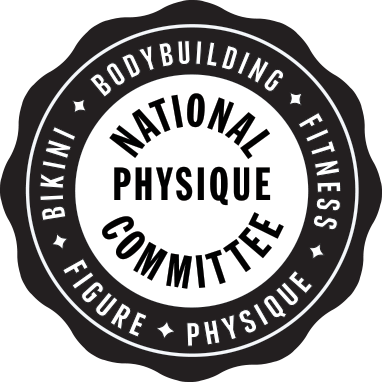
NPC NEWS ONLINE 2021 ROAD TO THE OLYMPIA – 2-Time IFBB Classic Physique Olympia Breon Ansley Delt Training
The National Physique Committee is the premier amateur physique organization in the world. Since 1982, the top athletes in bodybuilding, fitness, figure, bikini and physique have started their careers in the NPC. Many of those athletes graduated to successful careers in the IFBB Professional League, a list that includes 24 Olympia and 38 Arnold Classic winners.
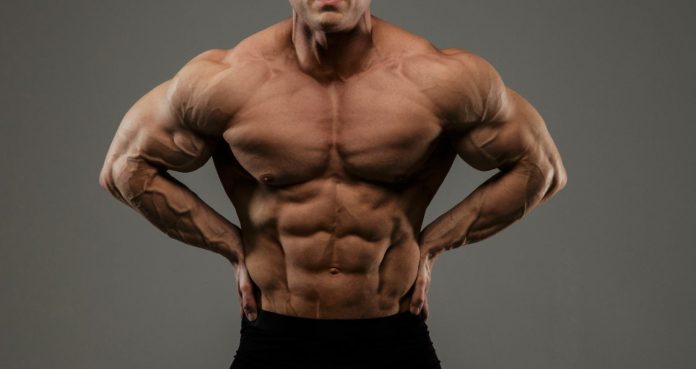
5 Bodyweight Exercises to Build a Ripped Chest
Build a Shredded Chest with these Bodyweight Exercises
A broad and muscular chest has been the symbol of masculinity for a long time. Most people think benching heavy weights is the only way to build a chiseled chest. This is as far away from the truth as it can be.
Your body doesn’t know how much weight you’ve loaded onto the bar. All it knows is the amount of muscle fiber recruitment and tension placed upon it. Calisthenics athletes are a great example of using your own bodyweight to build a ripped chest.
Parallel Bar Dips
Parallel bar dips are a bad-ass exercise and will fill up your pecs with blood and lactic acid. We prefer the parallel bar dips over the bench dips as your lower body weight adds resistance in the bar dips whereas the bench dips take it off.
While performing the parallel bar dips make sure you bend forward a little as it will put more tension on your pectoral muscles and will eliminate the recruitment of the triceps. Maintaining a full range of motion in the bodyweight exercises is critical for the development of the muscles.
Barbell Rollout Flyes
Barbell rollout flyes aren’t for the faint-hearted. The rollout flyes are for the advanced lifters and include the use of a couple of barbells and weight plates. Don’t worry, you won’t have to lift any of it.
Get into the push-up position and place a barbell at each side, so one end of the barbells are next to your feet and the other is next to your shoulders. Grab the barbells at the start of the grip area and push them apart so your chest is almost touching the floor. Pull the barbells to the starting position where they should be under your shoulders and squeeze your pecs.
Push-Ups (Different Variations)
There are enough pushup variations that you can try a new one in every workout for months. Pushups are one of the basic functional exercises and are one of the first exercises people learn to perform.
You can perform the incline pushups if you want to train your upper pecs, decline pushups for the lower chest, normal pushups for the middle and overall chest mass. Advance forms include superman pushups, clap pushups, one-hand pushups etc.
Resistance Bands or TRX Flyes/Presses
TRX and resistance band flyes and presses are isolation exercises which can target the pecs from specific angles. Resistance bands are incredibly portable and can be taken along in a backpack or a suitcase while you’re traveling.
You can decrease the resistance on the bands by holding them close to the bottom or add resistance by grabbing the bands farther away from the ends. Tie the bands to a straight pole or hang them from a bar near the ceiling if you don’t have an access to a gym.
Isometric Exercises
Isometric exercises are one of the most underutilized exercises and don’t get their fair share of credit when it comes to building muscle mass and definition. The isometric exercises are a great way of building a mind-muscle connection. If done at the end of a workout isometric exercises can give you a muscle-ripping pump.
Isometric exercises are a type of strength training in which the joint angle and muscle length don’t change during contraction. Isometrics are done in static positions, rather than being dynamic through a range of motion.
Which is your favorite bodyweight chest exercise? Let us know in the comments below. Also, be sure to follow Generation Iron on Facebook and Twitter.
*Header image courtesy of Envato Elements.
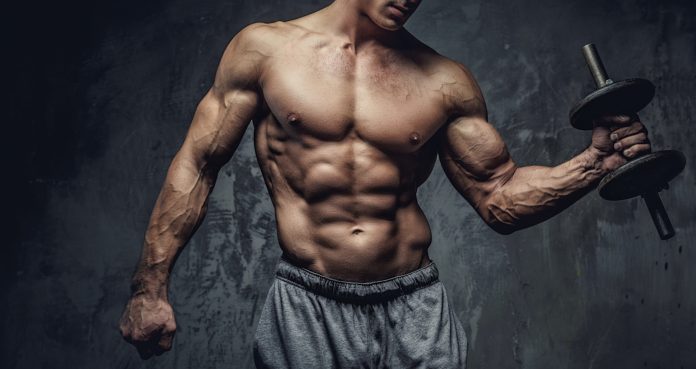
This is How Your Training Should Change as You Get Advanced
How to Take Your Workouts to the Next Level
Sticking with the same training program for a long time is a sure shot way of hitting a plateau and stalling your gains. To get the most out of your workouts, your training techniques should develop and advance with you.
Improving your physique with every passing year is a constant quest for which you’ll have to work hard. Shocking your muscles is the only way to make them grow. If you follow the same training program in every workout, your muscles can get used to them and will refuse to grow.
Advanced Training Techniques
Advanced training techniques like the super, drop, giant, rest-pause sets, forces, cheat, 21 reps are a great way to shock your muscles and force them into growing. As you get advanced, you’ll have to be on the lookout for how to make your workouts harder.
Bodybuilders are always chasing the pump and you should be willing to leave your comfort zone and try new things. Changing the rep tempos and increasing the time under tension can do wonders for your muscle growth.
New Training Equipment
Use of new training equipment can be instrumental in sparking new muscle growth. Using an arm blaster, fat grips for your arm workouts, elastic bands for supersets or adding resistance, or using assistance tools like slingshots, knee, elbow sleeves can take your workouts to a whole new level.
If you have been working out at the same gym for a year or two, your body might get familiar with the machines. Changing gyms can help ignite muscle gains as the ergonomics of the machines will be new for your body.
Change Training Splits
Switching up your training days can be a good idea. If you train your chest on the international chest day, i.e. Monday, move it to the end of the week. Doing this can keep your muscles guessing.
You could also train two muscles groups in a single workout. Training two muscles in a single day allow you to train one muscle group twice a week which is a great way of bringing up lagging muscles.
Start a New Training Program
You’ll know your body is adapting to your training program when you stop getting a pump and see no positive changes in your muscles. Every training program intends to develop your muscles by following certain principles.
You can’t follow the same training program for building muscle, losing fat or toning your muscles and expect to see results. Make sure you don’t jump the gun and start an advanced program if you’re a beginner.
Time
As you advance in your training, the time you spend in the gym shouldn’t increase. Most people think spending more time training will get them better results. Your muscles don’t grow while you’re working out, they develop when you’re resting and are following a diet.
Incorporate advanced training techniques and make your workouts more intense so you can get a lot done in one hour at the gym. After the one hour mark, the time you spend in the gym will be inversely proportional to the effectiveness of your workout. Most people will do better by keeping their workouts short, intense and explosive.
When did you start training? Let us know in the comments below. Also, be sure to follow Generation Iron on Facebook and Twitter.
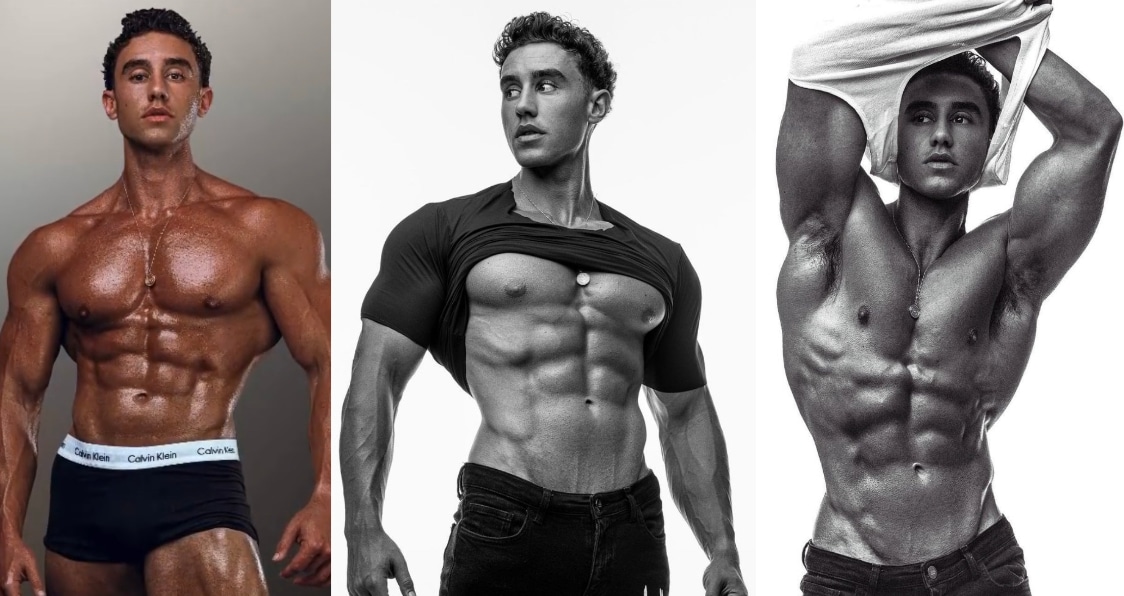
Zac Perna’s Guide To Picture Perfect Abs
Checkout how Zac Perna has built incredible abs.
Zac Perna is an Australian fitness influencer, coach, and trainer born on 7 May 1995. Known for his engaging content, Perna is fast becoming one of the most popular personalities in the fitness industry.
Zac Perna first started working out at the age of 15. Growing up, he suffered from a negative body image and low self-esteem. Not long after joining a gym Zac fell head-over-heels in love with the fitness lifestyle and the positivity it breeds.
The positive influence of working out on his mental and physical well-being inspired Zac to work towards helping people achieve the same result.
“My goal is to personally change as many people’s lives for the better through an honest, genuine connection; educating in fitness and health. My vision is to become the leading fitness influencer in Australia to demonstrate the impact humility and a passion for change can have on spreading positivity and reaching your goals.” – Zac Perna on being asked about his coaching aim.
Zac Perna Stats
Name: Zac Perna
Height: 5’7″
Weight: 156 lbs
D.o.B: 7 May 1995
Zac Perna Diet
Contrary to what most people think, abs are made in the kitchen. The crunches and leg raises you do in the gym only help carve your abdomen.
If you want chiseled abs, you will need to do more than a few crunches. Everybody has abs. It is just that most of us love them so much that we keep them protected under a layer of fat – at least this is what I tell myself every time I look at my flab.
But how do you build abs in the kitchen, you ask?
Crafting Greek gods’ like abs requires you to stay away from junk food as they contain unhealthy amounts of fats, carbs, and sugar and increase your risk of weight gain.
On the other hand, ab building foods help boost metabolism, enhance fat burning, and keep you feeling full between meals.
Related: Generation Iron Management Signs Rising Fitness Star Zac Perna
Zac Perna Nutrition Tips For Building Abs
According to the Australian fitness star, he suffered in the initial days of his transformation because he had no clue about what to eat. To help his fans from falling into the same trap, Zac recommends:
1. Not Overcomplicate Your Diet
Zac Perna feels that most people obsess way too much about macro splits and other minute diet details. He recommends keeping it simple and focusing on eating healthy, especially if you are just getting started.
You should include a variety of fruits, vegetables, animal products in your diet and minimize processed food consumption. Cut out sugar, soft drinks, and processed food from your diet regimen and include nutrition-dense foods.
Next Read: 10 Best Food For Gaining Size and Strength
2. Educate Yourself
Even after arriving at the ‘perfect’ diet plan, you should never give up researching how to improve it. Zac advocates reading about dieting, different foods, macros, and calories, and how you can manipulate them to suit your goals.
Perna also recommends downloading a calorie tracking app and logging your everyday meals. By counting your calories, you will get a good idea of what you are eating and what you need to do to improve your physique.
3. Meal Prep
Zac Perna suggests learning how to cook delicious and healthy food. According to him, meal prep is an easy way to stay compliant and consistent.
Perna has tried all the meal prep methods and believes that cooking every three days works the best for staying consistent with your nutrition program as you do not need to freeze any meals, and the food stays fresh and delicious.
Zac Perna Diet Plan
Zac routinely switches between bulking and cutting phases. He increases his calorie intake during the off-season and cuts them back when prepping for a show.
Related: Zac Perna Breaks Down The TRUTH About Burning Fat
Zac Perna Bulking Diet
While some people like to dine at McDonald’s every day during their bulking cycle, Zac prefers eating clean when trying to put on muscle mass. Here is what he eats:
Meal #1: Tuna and rice (515 calories, 28g protein, 66g carbs, 14g fat)
Meal #2: 2 pieces of fruit during his workout (400 calories, 100g carbs)
Meal #3: Rice flakes and crumpets (932 calories, 45g protein, 160g carbs, 7g fat)
Meal #4: Beef sumo and white rice (820 calories, 61g protein, 80g carbs, 29g fat)
Meal #5: Salmon and egg rice (722 calories, 40g protein, 80g carbs, 23g fat)
Meal #6: Chicken and sweet potato (500 calories, 46g protein, 70g carbs, 3g fat)
Meal #7: Protein shake (130 calories, 25g protein, 1g carbs, 1g fat)
Next Read: Different Diets You Should Try to Build Muscle and Lose Fat
Zac Perna Shredding Diet
Unlike most athletes, Zac does not eat boring while leaning down for a show. He eats ice cream every day while shredding. Yes, you read that right. Here is Perna’s shredding diet regimen:
Meal #1: Japanese style omelet (207 calories, 17g protein, 4g carb, 13g fat)
Meal #2: Post-workout protein bowl (410 calories, 32g protein, 56g carbs, 4g fat)
Meal #3: Chicken tenders and potatoes (433 calories, 48g protein, 44g carbs, 8g fat)
Meal #4: Chicken thighs and mixed vegetables (412 calories, 38g protein, 0g carbs, 28g fat)
Meal #5: Protein ice cream (31g protein, 16g carbs, 10g fat)
Zac Perna Workout Principles
Being equipped with the correct training principles from the get-go can make all the difference in your transformation. Zac’s most important training tips include:
1. Finding the Right Training Time
Zac Perna prefers training early in the morning as, this way, he can start his day with what he loves the most. On top of that, his morning workout routine powers him to get through the rest of his day.
As per Perna, waking up early every day trains your body to perform in a state with distractions and teaches your mind to suck it up and do what has to be done.
2. Finding the Right Training Program
Zac believes that many people make the mistake of imitating someone else’s training routine. He recommends trying a variety of training routines and coming up with a personalized program based on what works the best for you.
3. Focus on Your Form
Perna is a huge advocate of starting small and focusing on your form in your initial days. If you train with poor form for three years and develop bad habits, you will end up doing the same thing for another three years, but probably with twice the amount of weight, increasing your chances of injury.
On top of that, unlearning the bad habits can take a lot of time and set you back on your transformation journey by a big margin. Zac Perna recommends focusing on the eccentric and concentric parts of every lift as it can help improve your mind-muscle connection and leave you with a muscle-ripping pump.
Related: 6 Ways To Improve Your Mind-Muscle Connection
4. The Ideal Rep Range
According to Zac Perna, if you are looking to build muscle mass, you should be performing anywhere between 8-12 reps of every exercise. If you want to build strength, do six reps or less.
On the other hand, if you want to work on your endurance, target 20-25 reps. Zac is a proponent of lifting heavy and believes in using a weight that helps him reach muscle failure between 8-12 reps.
5. Do Not Overlook the Importance of Rest
The YouTube sensation believes that the importance of rest is often overlooked, and most beginners are attracted to the ‘hardcore’ training philosophy and end up adopting the “rest when I’m dead” approach.
Remember: You break muscle when you are in the gym, and growth occurs outside when you are resting.
If you do not give your body enough time to rest and recuperate from your workouts, you will fail to improve and grow. Rest is especially important in cases of small muscle groups like abs, arms, and calves. If you train them every day, you will end up overtraining them.
Check Out: This Awesome Zac Perna Home Workout Routine is Simple Yet Effective
Zac Perna Ab Workout
Zac follows a circuit training routine for his abdomen. It helps him annihilate his abs in a short period. His ab workouts do not last more than 15-20 minutes.
The fitness athlete focuses on contracting his abs with every rep and hits them from every angle possible to ensure overall development. Perna also advocates not going too heavy while training abs or hitting them too often as, like every other muscle group, they too are a muscle, and you might end up with a bloated-looking gut.
Zac Perna Ab Training Routine
Circuit Training: 4 circuits of 4 exercises
In the circuit, you will not be taking a break between the exercises but are allowed a one-minute rest after completing one circle. You will complete four circuits in total.
Must Read: Top Signs Of Overtraining And How To Avoid It & Tackle Fatigue
1. Hanging Leg Raise: 15-20 reps
Steps:
Grab a pull-up bar with a shoulder-width overhand grip.
Your body should be in a straight line at the starting position. Keep your toes pointed throughout the exercise.
Lift your legs in front of you while keeping your upper body stable and maintaining a slight bend in your knees.
Raise your legs until your legs are slightly above parallel to the floor.
Exhale sharply at the top of the movement and contract your abs.
Slowly return to the starting position.
Repeat for recommended reps.
Make sure you are not using momentum by swinging back and forth to lift your legs.
Zac’s Tip: On the way up, lift your hips along with your legs. Limiting the movement to your legs will result in greater hip flexor recruitment.
2. Rope Crunch: 15-20 reps
Steps:
Set the pulley machine at the highest setting, add a rope attachment and position yourself beneath it, on your knees and facing the machine.
Reach up and grab the rope attachment with a neutral grip (palms facing each other).
Pull the rope down until your hands are next to your ears.
Crunch down, lowering your elbows to your knees.
Exhale and contract your abs at the bottom of the movement.
Return to the starting position with a slow and controlled movement.
Repeat for recommended reps.
Zac’s Tip: The rope crunch is one of Zac’s favorite ab exercises. He uses a moderate weight on the exercise. Using more weight than you can handle takes away the tension from your abs and puts it on your back.
3. Cable Oblique Side Crunch: 15-20 reps (each side)
Steps:
Set the pulley machine at its highest setting and add a D-handle attachment.
Position yourself beneath the D-handle, on your knees with your left side towards the pulley machine.
Reach up with your right arm and grab the handle with an overhand grip.
Place your left hand on the obliques on your right side.
While breathing out, perform a crunch on your right side and contract your obliques at the bottom of the movement.
Instead of bending to your right, perform a diagonal crunch so that your obliques get the most work.
Return to the starting position.
Repeat for recommended reps before switching sides.
Zac’s Tip: In the side crunch, your goal should be oblique annihilation. Use a lightweight and focus on following the perfect form.
4. Vacuum: 1 Minute
Steps:
Bend at your waist and support your upper body with your hands on a table or dumbbell rack around hip height.
Take in a deep breath through your nose and then blow it out through your mouth sharply until you feel there is no more air left in your lungs.
With your lungs devoid of air, pull your abdominal column in by inhaling sharply through your nose.
While performing the final step, try to touch your navel to your spine.
Note: At first, it will be hard to hold a vacuum for even 10 seconds. Practice it repeatedly throughout the day until you hit the 1-minute mark.
Zac’s Tip: Everyone focuses on ab moves that hit the visible rectus abdominis, the six-pack muscle. But they skip the transverse abdominis, or TVA, which is the deepest layer of abdominal muscles. Performing the vacuum pose trains the TVA which, in turn, helps stabilize your core.
Next Read: Pump With Perna: Massive Chest Workout With Zac Perna
Wrapping Up
Zac Perna takes a mindful approach to his training, diet, and recovery programs. His training and diet routine focuses on getting the best bang for his buck.
Building a picture-perfect midsection requires discipline, patience, and persistence. Now that you have all the tools, we look forward to seeing your transformation. God speed!
Who is your favorite fitness YouTuber? Let us know in the comments below. Also, be sure to follow Generation Iron on Facebook and Twitter.
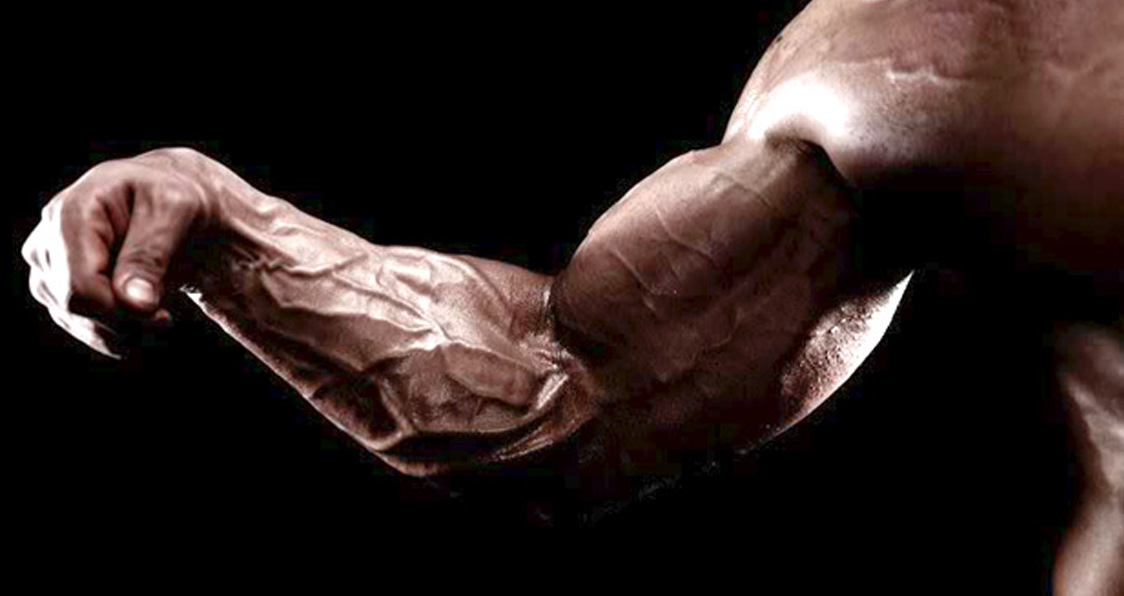
5 Best Exercises For Massive Forearms
Do These 5 Exercises For Big Forearms
Forearms are one of the most underrated muscle groups, and most people overlook training them. If you’re someone who prefers wearing t-shirts, your forearms are more exposed than your biceps, so why not try and give them the love they deserve. While people may not look directly at your forearms, a set of solid and strong forearms can add to your physique and make others certainly envy you.
Even if you’re someone who focuses on training forearms, they can be a challenging muscle group to build up. They are one of the top areas that people struggle with and often find themselves plateauing. We want to make sure we focus on those muscles that others envy. A common mistake is that there are only a few exercises to work your forearms. That is not true. Plenty of compound movements will give your forearms a burn so they grow. What you will find however is that there are certain exercises perfect for building and isolating your forearms, so they grow.
Muscle symmetry can add to your body aesthetics and can make your arms look bigger than they are. Training your forearms as accessory muscles isn’t enough to add muscle mass. You need to treat them as you would treat any other muscle group. As a bodybuilder, or someone seeking a well-rounded physique, don’t neglect a body part that is most visible most often. A set of forearms that will stand out and only add to your symmetry is exactly what you need to see the growth and overall gains you want most.
That’s why we’ve put together this list of the five best exercises for how to get bigger forearms. If done right, this will get you on the path to building massive forearms to be proud of. With the right approach and proper training, you will be well on your way to seeing effective gains all while giving your forearms the love they deserve.
Anatomy of the Forearms
Your forearms are made up of three muscles/ muscle groups, all working for their own benefit respectively. Your brachioradialis is the muscle that flexes the forearm at the elbow (1). Certain exercises like hammer curls are great for this muscle.
Your flexors are located on the posterior side of the forearm and are responsible for wrist extension, finger extension, and forearm supination, so turning your palm upward and outward. An exercise like the barbell wrist curl is a good one for flexors.
The extensor muscles are located on the anterior of the forearm and deal mainly with flexion and pronation, rotating your forearm so your palm is backwards and downwards. The dumbbell wrist extension exercise is a good exercise to perform for forearm growth.
Benefits Of Strong Forearms
Having strong forearms is important when it comes to those of us who lift for a number of reasons. They first provide for better grip strength and as we work up in weight, it is important for us to realize that we need to have a solid and secure grip so our gains never falter (2). They also provide for bicep stability and will work improve all those big lifts that deal with your biceps and other body parts. Plus, they will provide for a more rounded and symmetrical physique that others will definitely envy.
5 Best Exercises For Massive Forearms
As promised, we wanted to share the 5 best exercises for massive forearms. Knowing the right exercises and having the right approach to training will better prepare you to tackle any workout. While forearms tend to be overlooked, these exercises will give you great gains and make you see the progress you want most.
Let’s take a look at these best 5 forearm exercises so you can have the best for all your gains.
1. Barbell Wrist Curls
Barbell wrist curls are one of the most common forearm exercises and yet most people perform them incorrectly. Don’t let your ego get the better of you while doing this exercise and use weights you can maintain a full range of motion with. The barbell wrist curls work the brachioradialis and flexors.
The best way of performing the barbell or dumbbell wrist curls is to kneel down at the side of a flat bench with your forearms placed on the bench. Grab a barbell with an underhand grip and curl it as high as you can while lowering the barbell. Let the barbell roll down to the tip of your fingers. Doing so will help in recruiting all the muscle fibers in your forearms and hands.
2. Barbell Reverse Wrist Curls
Barbell reverse curls is another common forearm exercise but is a little harder as compared to the normal wrist curls. Use a wrist curl machine if you have access to it at your gym or use a flat bench.
You will be lifting lighter weights in this exercise as compared to the normal wrist curls. Grab the bar with an overhand monkey (thumbs over the barbell) grip. A monkey grip helps in better targeting your forearms better. The reverse wrist curls work the extensor muscles.
3. Behind the Back Cable Wrist Curls
Behind the back cable wrist curl is a great exercise to isolate your forearms. Using the cables will help you maintain a constant tension on your forearms and will fill your muscles with lactic acid.
Stand with your back towards the cable pulley machine and grab a straight bar. Curl the bar and hold the movement at the contraction for a couple of seconds. This exercise focuses on your brachioradialis and flexors.
4. Reverse Grip Barbell Curls
Reverse grip barbell curls are a compound exercise and will help you in developing muscle mass and strength in your forearms. Holding the barbell with an overhand monkey grip will make your forearms work harder to hold onto the bar.
Keep your elbows pinched to your sides and curl the barbell. Keep the reps slow and controlled and squeeze your forearms and biceps at the top of the movement. The reverse grip barbell curls work the extensors.
5. Farmer’s Walk
Farmer’s walk helps in building forearm size and grip strength which can carry over to other exercises. The farmer’s walk is also one of the easiest exercises to perform. Grab a pair of dumbbells and walk around until you can’t hold onto the dumbbells anymore.
Another variation of this exercise is the pinch carries. In pinch carriers, you need to pinch together two plates so they don’t slip. Pinch carries activate your forearms by forcing you to squeeze your fingers so the plates don’t separate.
Recommended Forearms Workout
With so many workouts out there, finding a good forearms workout may be challenging. We wanted to share a great one with you so you can tackle your arm goals with no problem.
Exercises
Sets
Reps
Barbell Wrist Curls
3
15
Barbell Reverse Wrist Curls
3
15
Behind The Back Cable Wrist Curls
3
12
Reverse Grip Barbell Curls
3
12
Farmer’s Walk
2
1 minute
Tip: Use a Thick Bar or Fat Gripz
Another way for how to get bigger forearms is to increase the muscle fiber recruitment of the forearm muscles and grip is to use a thicker bar. Conventional barbells and dumbbells have one-inch handles, but you can use thicker bars to make the forearms work harder. Thicker bars also provide a greater stimulus for your forearms to grow stronger and larger. It would be worth trying this out for you will get great benefits that can work towards your goals with a solid bar.
Supplements For Bigger Forearms
When looking to enhance forearm growth, looking to the right supplements will prove to be worthwhile for growth and recovery. A solid pre-workout can work to provide energy and push past fatigue while also aiding in increased blood flow so your forearm muscles really start to grow. On top of that, a protein supplement for those post-workout gains will work to boost protein synthesis and allow those muscle tears to heal producing more muscle. Creatine is also great for increasing strength and size and for those really looking to put on mass and muscle, a mass gainer is a great option to advance your gains.
Wrap Up
Getting bigger forearms can make those arms of yours truly pop. How to get bigger forearms may seem challenging, but with this workout and some great supplements, you are well on your way to making that happen. Don’t neglect your forearms and give yourself the best chance at overall success by putting these 5 best exercises for massive forearms into your routine.
Let us know what you think in the comments below. Also, be sure to follow Generation Iron on Facebook, Twitter, and Instagram.
*Images courtesy of Envato
References
Mitchell, B.; et al. (2021). “Anatomy, Shoulder and Upper Limb, Forearm Muscles”. (source)
Szymanski, D.; et al. (2004). “Effect of 12 Weeks of Wrist and Forearm Training on High School Baseball Players”. (source)
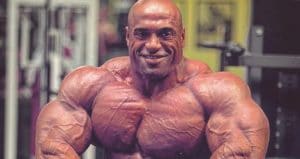
Q&A With IFBB Pro Dennis ‘The Menace’ James On Training & More
Photo via @bigdjames Instagram
Today we’re sitting down with former Olympia competitor Dennis ‘The Menace’ James.
Dennis James is a former top tier IFBB professional bodybuilder and is now a coach to many high-profile athletes such as Mr. Olympia Big Ramy. We’ll talk about the training, nutrition and supplement protocols that Dennis uses with his clients.
Photo via @bigdjames Instagram
About Dennis James
Dennis James is a former professional bodybuilder born in Germany. He was always active and started training at a young age. But when he was 18-years old, he started bodybuilding and his training went to a whole new level. He competed at Mr. Olympia seven times and proved he had what it took to be the best in the world. He has been featured in many magazines and his social media presence is massive. His relationship with two-time Olympia Champ Big Ramy also brings increased notoriety as he continues to promote the sport of bodybuilding while inspiring others so they can succeed as he has.
Q&A With Dennis James
We sat down with Dennis James to talk about his training, nutrition, and supplement protocols that he uses with himself and his clients. Someone as knowledgeable as Dennis can greatly help your gains by offering only the best guidance.
Generation Iron: Hi Dennis James. Thanks for taking the time to talk with us today. Before we get into the Q/A session, I wanted to complement you on how great Big Ramy looked at the Mr. Olympia!
Dennis James: Thank you for the kind words. Big Ramy is like a brother to me. It’s a privilege to coach him.
Generation Iron: You have a fantastic reputation as one of the best bodybuilding coaches around. Does coaching come naturally for you?
Dennis James: People often forget that I competed as a professional bodybuilder for over 10 years. I’m dating myself now, but I turned pro back in 1998. Throughout the years I’ve learned from trial and error what works and what doesn’t. Coaching becomes very easy with that much experience.
Generation Iron: Wow! I didn’t realize you were such a veteran of the sport. Do you still follow a lot of the same training and nutrition principles?
Dennis James: Yes. I’ve always believed in the fundamentals. It’s easy to get distracted with fancy looking machines and tasty sounding protein bars but free weights and real food is what builds quality muscle.
Generation Iron: That makes a lot of sense. What did your diet look like when you were competing?
Dennis James: I always followed a high carbohydrate, moderate protein and low-fat diet. I feel that a lot of bodybuilders go overboard with the protein. Anything over 1g/pound of bodyweight isn’t needed. Too much protein causes poor digestion and a distended stomach.
Photo via @bigdjames Instagram
Generation Iron: You were always known as having a very small waist for such a large bodybuilder. Would you say that keeping your protein low is one of the ways you were able to achieve that?
Dennis James: 100%. I also trained abs every single day. A lot of new bodybuilders don’t train abs and that never made sense to me. Regularly training the abdominals keeps the waist tight and toned.
Generation Iron: Let’s talk about your training then! How many days per week did you train?
Dennis James: I always trained 6 days per week with Sundays completely off. Sunday was always family time for me.
Generation Iron: What was your training split?
Dennis James: Push/Pull/Legs. Repeat. I trained each body part twice per week. Except abs and calves, which I trained every day.
Generation Iron: How about your workouts? Did you train high volume?
Dennis James: I always trained hard and heavy. When people asked if I trained high volume or high intensity, I always replied ‘both!’ lol.
Generation Iron: Last question before we close off; how did you change your diet and training after retiring from competing?
Dennis James: Great question. I slowly transitioned into a less strict program. I still eat and train like a bodybuilder but I only workout 4 days per week and I eat much less food. I still follow the fundamental principles of nutrition, but I eat much more fruits and vegetables now that my focus is health and longevity
Generation Iron: That’s good advice! Do you have any closing remarks for our fans before we sign off?
Dennis James: Remember that your body needs time to build muscle. There are no secrets and no magic pills. It takes dedication to build a beautiful physique. As the saying goes ‘Rome wasn’t built in a day!’
Best Supplements To Take For Gains
When it comes to building muscle and seeing the right gains, having the best supplements on your shelf is imperative. The right products can be game changers for your health and performance. Looking to protein powders, pre-workouts, and BCAAs can provide for those pre-, mid-, and post-workout needs. Other supplements to definitely consider are super greens and multivitamins as these will boost your health immensely.
Wrap Up
Dennis James is an accomplished bodybuilder and coach who knows what needs to be done in order to see real success. This Q&A will hopefully be exactly what you need to succeed as we talk about training, nutrition, and supplementation to give you the best gains for yourself. We thank Dennis for taking the time and giving us great advice on how to boost our own gains.
Let us know what you think in the comments below. Also, be sure to follow Generation Iron on Facebook, Twitter, and Instagram.
*Images courtesy of Dennis James Instagram
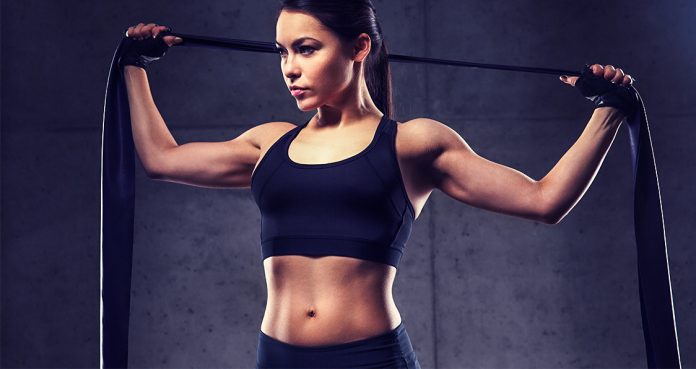
The 10 Best Band Exercises
Best Resistance Band Exercises You Should Be Doing
The resistance band exercises are some of the most undervalued and underutilized exercises. Bands are one of the few types of training equipment which change its resistance level at different positions throughout an exercise’s range of motion.
A band will add resistance as its being extended and will reduce the added tension as it returns to the starting position. A resistance band’s variable resistance property is fantastic in improving your weak muscle groups and building explosive strength.
MORE: Check out our list of the Best Resistance Bands here!
Assisted Pull-Ups
If you’re a fitness noob and can’t do a pull-up, the baned pull-ups are an incredibly effective way of building upper body strength. You might need different types of bands for different exercises. You should reduce the band strength as you get better at the pull-ups.
Banded Push-Ups
The banded push-ups are the only push-up variation which allows you to have constant tension on your pectoral muscles throughout the movement. You can change the resistance of the bands by grabbing them at different lengths.
Bicep Curls
You could train virtually every muscle group using the resistance bands which leaves you with no excuses to ever miss a workout. The bicep curls are a simple exercise which can help in building definition in your guns.
Wood Choppers
Performing banded ab exercises can leave your midsection sore for days. Tie one end of the band at waist height to a vertical bar and grab the other end with both your hands. You should stretch out your arms to the sides at the starting point of the movement. Turn to the other side while breathing out and squeezing your abs. Return to the starting position and repeat for recommended reps.
Chest Flyes
Attach a resistance band to a pole and mimic the movement of the cable chest flyes. You should pause and squeeze your muscles with every rep while performing the exercises mentioned on the list.
Banded Leg Press
The resistance band use is limited by your imagination. You can add the bands to machines and put additional tension on your muscles. The banded leg press machine will have the highest tension at the top of the movement and the least at the bottom.
Tricep Extensions
Although the triceps is one-half of your arms, they don’t get the same love as the bis. Doing the banded tricep extensions will fill your tris with blood and lactic acid. You could perform variations like the standing, overhead, and bent over tricep extensions with the resistance bands.
Banded Bench Press
The banded bench press is an advanced exercise and should only be attempted by seasoned lifters. The resistance bands bring your core into action. As a result, your muscle stabilizers grow stronger.
Squats
In the big three compound lifts (bench press, squats, and deadlifts), you can keep one end of the band planted on the floor by tying it around a heavy dumbbell. The other end should be wrapped around the barbell.
Shoulder Front Raises
Performing the banded shoulder front raises will annihilate your anterior deltoids by keeping them under constant tension. We highly recommend adding resistance band exercises to your training routine as they can take your gains to the next level.
Which is your favorite resistance band exercise? Let us know in the comments below. Also, be sure to follow Generation Iron on Facebook and Twitter.
*Header image courtesy of Envato Elements.
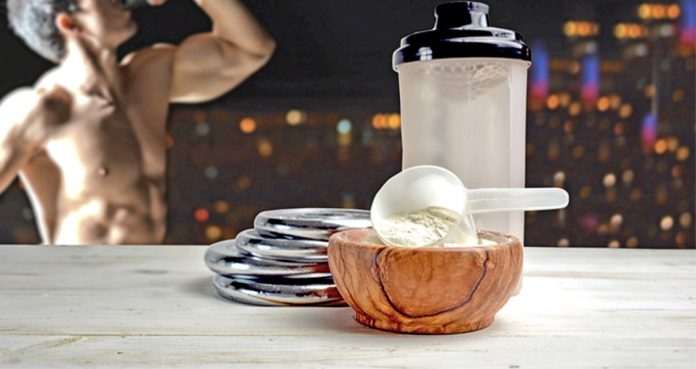
When To Take BCAA Supplements For The Best Results
When To Take BCAA Supplements
BCAAs are arguably one of the most mysterious supplements. While many people know about the existence of BCAAs, they don’t know what they do. BCAAs are an incredibly effective supplement when taken at the right time and in the right amount.
Branched Chained Amino Acids (BCAAs) got their name because, from a chemical structure standpoint, they have forked outcroppings which look like a branch. Leucine, isoleucine, and valine are the three essential amino acids forming BCAAs.
In a study, the trained triathlete who consumed BCAA supplements for eight weeks gained about twice as much muscle mass and strength as compared to the athletes who only took a whey protein supplement without additional BCAAs. The results rely a lot on the time you consume the supplement so you should know when to take BCAA supplements.
One BCAA supplement to consider is National Bodybuilding Co. Pro Contest BCAA which won GI Supplement Awards for Best Post-Workout. With a great 2:1:1 ratio, this BCAA supplement can boost athletic endurance and reduce fatigue while also optimizing muscle growth and stop muscle breakdown. A simple formula with naturally sourced ingredients, this supplement is definitely one to try.
Check out National Bodybuilding Co. Pro Contest BCAA here. You can also check out the top BCAA Supplements for Recovery here.
Difference Between Amino Acids and Branched Chained Amino Acids
Most people have a hard time differentiating between amino acids and branched chained amino acids. Both these supplements are processed uniquely by your body and have different effects on your physique. Understanding the difference between them can tell you when to take BCAA supplements.
As you probably already know, your muscles are made up of protein. Protein is further made up of amino acids which look like a pearl necklace. If you want to build muscle, you want this pearl necklace to get bigger so your body can make more protein. This process of converting amino acids into protein is known as protein synthesis.
The BCAAs are indispensable components in the aforementioned process of converting amino acids into protein. They act as the building blocks for building muscle. Each of the three branched chained amino acids plays a vital role in this process.
When you consume amino acids, they go directly to your liver. In the liver, they are either converted into fuel to be used as energy by your body or are passed for building and repairing muscle. Your muscles will only receive the amino acids if they’re not converted into energy.
BCAAs are treated differently. They are not sent to the liver and head straight to your muscles where the muscles use them as fuel or to build and repair themselves. This is the reason BCAAs have grown in popularity in the bodybuilding community.
Role of The Three Amino Acids
Why and when to take BCAA supplements has a lot to do with the role they play in bodybuilding. Apart from being effective at muscle growth, BCAAs help in delaying fatigue during your workouts, boost fat loss and supports strength and mental focus. Each of the three essential amino acids plays a specific role in the supplement.
Leucine
Leucine helps with protein synthesis and leads to muscle growth. Leucine is the main essential amino acid which starts the process of combining amino acids to produce muscle protein.
Leucine also boosts insulin levels which are an anabolic hormone which further stimulates protein synthesis. Furthermore, it boosts growth hormone which promoted muscle growth and reduces cortisol levels which break down muscle.
Isoleucine
It is a known fact protein synthesis can help fight body fat. BCAAs increase the protein synthesis in your body which in turn increases your energy expenditure so much that it helps in burning body fat.
Isoleucine activates special receptors known as PPAR which increase the fat burning process in your body and inhibit fat storage. When you supplement with isoleucine, your body starts using the stored fats as fuel.
Valine
The amino acid tryptophan is responsible for producing serotonin which signals to the brain that the body is fatigued. The BCAA valine actively competes with tryptophan for entry into the brain.
Consuming valine before a workout can delay fatigue and reduce the amount of tryptophan in your brain. This shows that BCAAs don’t only improve your body function, but also your mental capabilities. They help you stay sharper and improve your cognitive abilities.
This Is When To Take BCAA Supplements For The Best Results
Before a Workout
BCAAs are a great supplement to be taken before a workout. BCAAs help in breaking down fat to release energy which can help you get more out of your workouts. You should also consume BCAAs first thing on waking up since you’re in a fasted state and BCAAs helps in preventing the breaking down of muscle.
During a Workout
BCAAs can help you during your workout by supplying constant energy. It also helps with delaying fatigue so you can make the most of your time in the gym. BCAA supplements can also improve your mental focus during your workouts.
After a Workout
BCAAs help with muscle repair and recovery. They’re a must with a post-workout shake or after a post-workout meal. BCAAs can speed up the protein synthesis in your muscles and help them heal and grow faster.
Dosage
You should take anywhere between 3-5 servings of a BCAA supplement throughout the day. Each serving should not be less than five grams. Sipping on BCAAs throughout your day can promote muscle growth, speed up recovery and reduce muscle soreness.
Do you supplement with BCAA? Let us know in the comments below. Also, be sure to follow Generation Iron on Facebook and Twitter.
*Header image courtesy of Envato Elements.
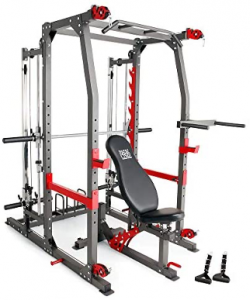
New Arrival Workout Equipment on Amazon to Look Out for in 2022
2022 is going to be a busy year for gym lovers, all thanks to reduced covid-19 restrictions. Most will get the opportunity to visit their favorite gym and acquire that killer body they’ve always dreamed of. However, we are not sure things will be completely normal given the unpredictable nature of the pandemic. It won’t come as a surprise if the majority of the human population would still be under partial or total lockdown as the new year begins. Nevertheless, some will choose to work out at home irrespective of how the situation is going to be. We have prepared for you a list of the latest workout equipment on amazon for your training and workout needs in 2022.
Marcy Smith Machine Weight Bench
Marcy Smith weight bench is full-body workout equipment you can easily install at your home for a cost of about $1600. Bodybuilders and fitness lovers who go for this machine are assured of a toned and fit physique. Most importantly, the equipment combines several features such as linear bearings, precision, pulley system, among others to give you an all-around workout. Additionally, it comes with an Olympic free weight rack and smith system for professional/competitive bodybuilders.
> > Marcy Smith Machine Weight Bench > Health & Fitness Under Desk Foot Pedal > Battle Rope for CrossFit & Undulation Training
